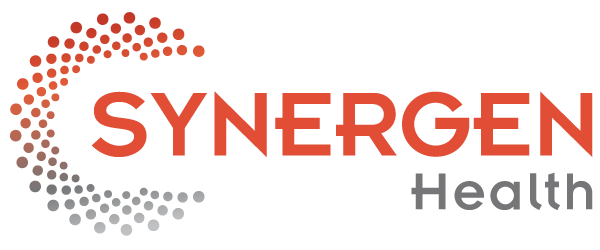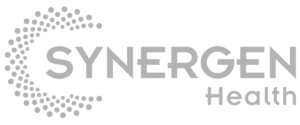In 2025, future-proofing your lab’s revenue cycle operations hinges on adopting a proactive, data-driven approach. Staying competitive means utilizing data to identify trends, predict outcomes, and close operational gaps across every component of the revenue cycle management (RCM) process.
In an industry where financial resilience is critical, leveraging AI-driven solutions can reshape lab operations, optimize productivity, and improve cash flow by automating labor-intensive processes.
Our Co-Founder, Mel Gunawardena, recently appeared on a Dark Daily webinar where he discussed the key trends in automation and predictive analytics that can help laboratories stay ahead in 2025.
Here’s what he discussed.
Laying a Strong Foundation Via Automated Eligibility and Coverage Discovery
Incorporating automation into the eligibility and coverage process can help labs prevent costly errors, such as delayed payments and denials, at the very beginning of the RCM journey before they become a problem.
Common challenges include incorrect insurance and demographic data, lack of insight into secondary or tertiary insurers, confusion between Medicare and Medicare Advantage plans, and fragmented data systems that lack integration.
To address these, automated batch processing can validate large volumes of orders, ensuring information accuracy at scale. For cases needing verification of benefits (VOB), automated coverage discovery helps with exceptions. Demographic validations compare requisition data with payor responses, confirm addresses with USPS, and match existing patient data in the billing system to catch potential discrepancies.
A rules-based approach can identify Medicare Advantage plans and customize submission processes based on payer requirements. Workflow queues manage exceptions, allowing for manual review when needed. Implementing this level of automation can sharply reduce initial error rates in eligibility verification, leading to a measurable revenue increase for your lab in 2025.
Results we’ve seen:
- 99% payor identification accuracy
- 99% demographics validation accuracy
- 7-10% revenue uplift from coverage discovery
- Reduced billing time with integrated process & bulk processing
- Increased 5X throughput over manual processing
Stay on Defense, Not Offense, With a Predictive Collections and Denial Management Workflow System
In many labs, denial management remains a time-consuming, manual process, hindered by limited prioritization, reliance on individual knowledge, and the inability to track denial patterns effectively. Each claim often requires individual attention, adding to human error risks and slowing productivity.
Labs can use an automated denials management playbook to capture essential denial resolution knowledge, such as specific payor requirements, procedure codes, denial codes, and remark codes. This approach shifts claim resolution to a data-driven system rather than individual interpretation and standardizes the process. AI tools can continuously monitor the effectiveness of these playbook solutions. When they detect inefficiencies, they adapt and suggest new fixes, driving iterative improvements week by week.
Results we’ve seen:
- Increased efficiency & accuracy by fixing multiple claims at once
- Increased one-touch fix rate
- Reduced time to collect insurance AR
- 1 FTE saved per 1000 denied claims/mo.
Turning the Tide on Tedious Appeals Work
After a denial, appeals can often demand significant manual effort, particularly for assembling documents, managing various payer submission methods, and requiring specific provider input for medical necessity. Each payor has unique requirements, whether submitting via fax, paper, or through a portal, creating a fragmented and time-intensive process.
Automation can streamline appeals by extracting necessary documents from multiple systems and compiling them into standardized appeal packets. Large language models (LLMs) play a role in drafting custom appeals and can also handle variations across payors, integrating seamlessly into bulk appeals submissions. A rules engine customizes submissions per payor, reducing human touchpoints and ensuring appeals are submitted efficiently and accurately.
Results we’ve seen:
- Eliminate or reduce manual touch needed for appeals
- 5X improvement in throughput for document prep
- Reduced time for submitting appeals
- 3X increase in appeals throughput
- 1 FTE saved per 1000 appeals/mo.
Cutting Through the Paperwork with Automated EOB and Correspondence Management
The paper-heavy world of explanations of benefits (EOBs) and correspondence often leaves lab teams juggling tasks and scanning for key details—a process that drains time and leaves room for error. Sorting, reading, and manually updating systems based on scanned documents can consume resources that are better spent elsewhere.
With automation, labs can implement workflows that consolidate all correspondence into a single management system. Optical character recognition (OCR) extracts text from scanned documents, while LLMs categorize and summarize correspondence by identifying reason and remark codes. This organized process escalates documents when necessary based on rules around provider identifiers, such as NPI, CLIA, and licensing. Integrating these processes with the billing system allows automated balance updates and payment postings, further enhancing operational efficiency.
Results we’ve seen:
- 173% improvement in time to review correspondence (from 2 minutes to .73 minutes)
- Increased productivity by automating handling of thousands of pages with less manual touch
- Reduced human errors from 15% to less than 1%
- 2 FTEs saved per 1000 correspondence/mo.
Future-Proof Your Lab Operations
With tools that not only automate but learn from historical data and adjust workflows accordingly, labs can effectively manage revenue cycles as strategic assets rather than cost centers. These changes underscore a growing realization in laboratory operations: RCM isn’t merely about billing; it’s about driving consistent revenue growth through smarter, future-focused strategies.
Looking to make some operational improvements in your lab via end-to-end RCM technology? We can help.

